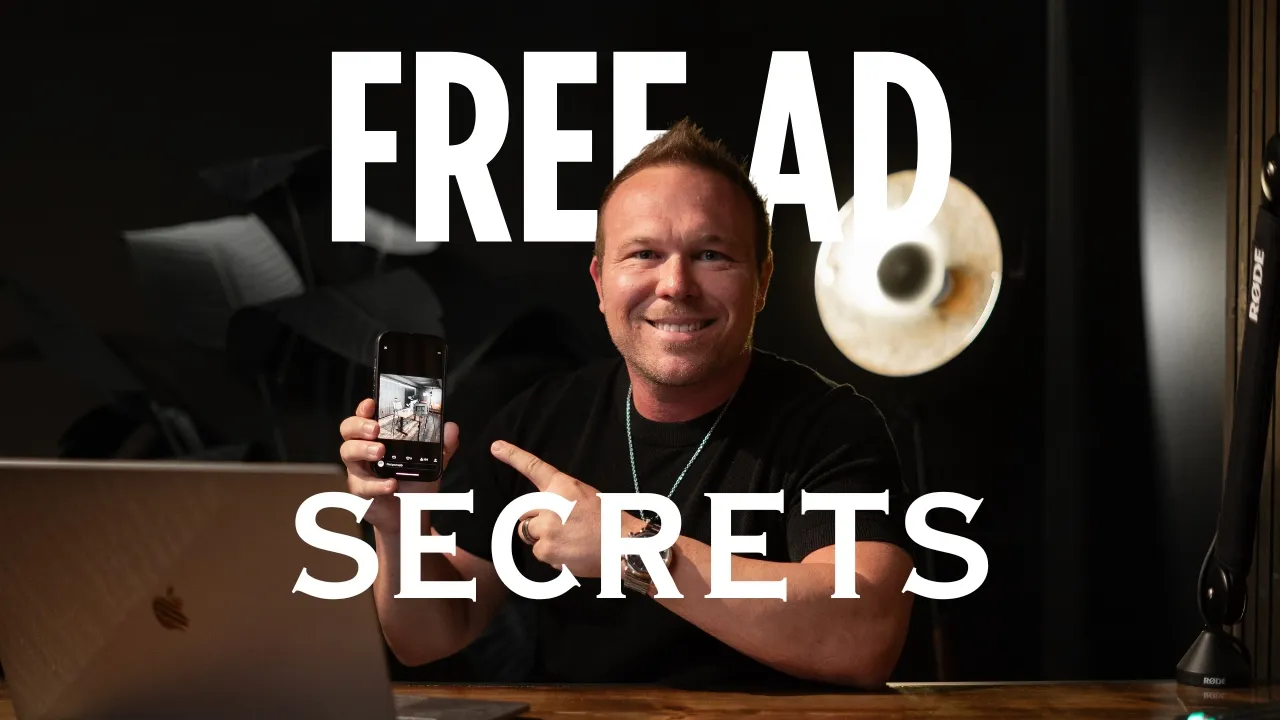Profitable Ads for Beginners 📈
Running ads can feel like setting money on fire. You pour in budget, click the launch button, and then… crickets. Or worse, a bunch of clicks from people who will never buy.
The truth is, ads can be a powerful growth engine for your business — but only if you approach them with a clear strategy. Most businesses fail not because ads “don’t work,” but because they don’t know how to structure campaigns, budgets, or messages that actually convert.
This guide will take you step by step through how to set up profitable ad campaigns, even if you’ve never run one before. We’ll use some tips from Brad Smith (Automation Links) as a base and build on them with more detail, examples, and practical advice.
Step 1: Define Your Customer Before You Advertise 👤
The biggest mistake beginners make is trying to advertise to everyone. If your audience is “anyone who needs my product,” your ads will flop.
Instead, ask yourself:
- Who is my ideal customer?
- What problem keeps them up at night?
- Where do they hang out online?
- What would make them trust me?
💡 Pro tip: Create a simple customer profile. For example:
“My ideal customer is a small business owner, age 35–50, frustrated with tech, who spends time on LinkedIn and YouTube, and wants simple marketing solutions.”
The sharper your definition, the easier it becomes to target ads that resonate.
Step 2: Pick the Right Channels 🌍
Brad’s advice is spot on: don’t put all your eggs in one basket. If you only advertise on Facebook, you’re missing people who spend their time elsewhere.
Here’s a quick rundown of common platforms:
- Facebook & Instagram: Great for B2C, lifestyle brands, local businesses.
- LinkedIn: Ideal for B2B and high-ticket services.
- YouTube: Fantastic for education, tutorials, and brand authority.
- Google Search Ads: Perfect for high-intent customers already looking for what you sell.
- TikTok: Strong for creative, visual, and trend-driven products.
💡 Pro tip: Start with 2–3 channels where your audience spends time. Don’t try to master all at once.
Step 3: Structure Your Budget Like a Funnel 💰
Here’s where most campaigns fail: businesses blow their budget on one type of ad. Usually, it’s a “Buy Now” ad sent to cold audiences who have never heard of them. That’s like proposing on the first date.
Instead, spread your budget across the three stages of the marketing funnel:
- Top of Funnel (50%):
Build awareness. Use video explainers, short guides, or fun posts that educate. Goal: attention and trust. - Middle of Funnel (30%):
Nurture interest. Share case studies, how-to blog posts, or webinars. Goal: show value and expertise. - Bottom of Funnel (20%):
Drive conversions. Offer a free resource, consultation, or discount in exchange for contact details. Goal: turn warm leads into customers.
💡 Pro tip: Don’t panic if your “awareness ads” don’t bring sales right away. They’re doing the slow work of warming people up.
Step 4: Create Ads That People Actually Care About ✍️
Bad ads talk about the product. Good ads talk about the customer.
Ask yourself: why should someone stop scrolling and care?
Here’s a simple ad formula:
- Hook: Grab attention with a bold statement or question.
- Problem: Point out the pain they already feel.
- Solution: Show how you solve it.
- Action: Tell them exactly what to do next.
Example for a fitness coach:
- Hook: “Still skipping the gym because you’re ‘too busy’?”
- Problem: “Most professionals struggle to fit workouts into their day.”
- Solution: “I design 20-minute custom workouts for busy people.”
- Action: “Click below to get your free plan.”
Step 5: Use Data to Improve (Not Guesswork) 📊
One of Brad’s tips is to use tools that show industry benchmarks. That way, you know if your ads are actually performing well or not.
Here are some key metrics to track:
- CTR (Click-Through Rate): Are people engaging with your ad?
- CPC (Cost per Click): Are you paying too much per click?
- Conversion Rate: Are clicks turning into leads or sales?
- ROAS (Return on Ad Spend): For every $1 you spend, how much do you earn back?
💡 Pro tip: Don’t change ads too quickly. Let them run at least 1–2 weeks before deciding what’s working.
Step 6: Be Patient and Play the Long Game ⏳
Ads are not a slot machine. You don’t put in $10 today and cash out $100 tomorrow.
Brad makes this clear: it often takes 1–3 months before leads turn into paying customers. People need to see your brand multiple times before they trust you.
Think of it like farming:
- Plant seeds (ads).
- Water them (nurture with content).
- Harvest later (sales).
If you give up after two weeks, you’ll never see results.
Bonus: Tools That Make Ads Easier 🛠️
- Ad Generator Tools: Great for getting started without staring at a blank page.
- Canva: Make visuals that actually look professional.
- Google Analytics / Meta Ads Manager: Track what’s happening behind the scenes.
- CRM tools (like HubSpot): Keep track of leads you capture.
Final Thoughts 🚀
Running profitable ads isn’t about luck or dumping cash into Facebook. It’s about:
- Knowing your customer.
- Choosing the right platforms.
- Splitting your budget smartly.
- Creating ads people care about.
- Tracking, testing, and improving over time.
- Being patient.
Do this, and you’ll stop wasting money on ads that don’t work — and start running campaigns that actually grow your business.

👉 Want to see Brad Smith’s original video? Watch here.
